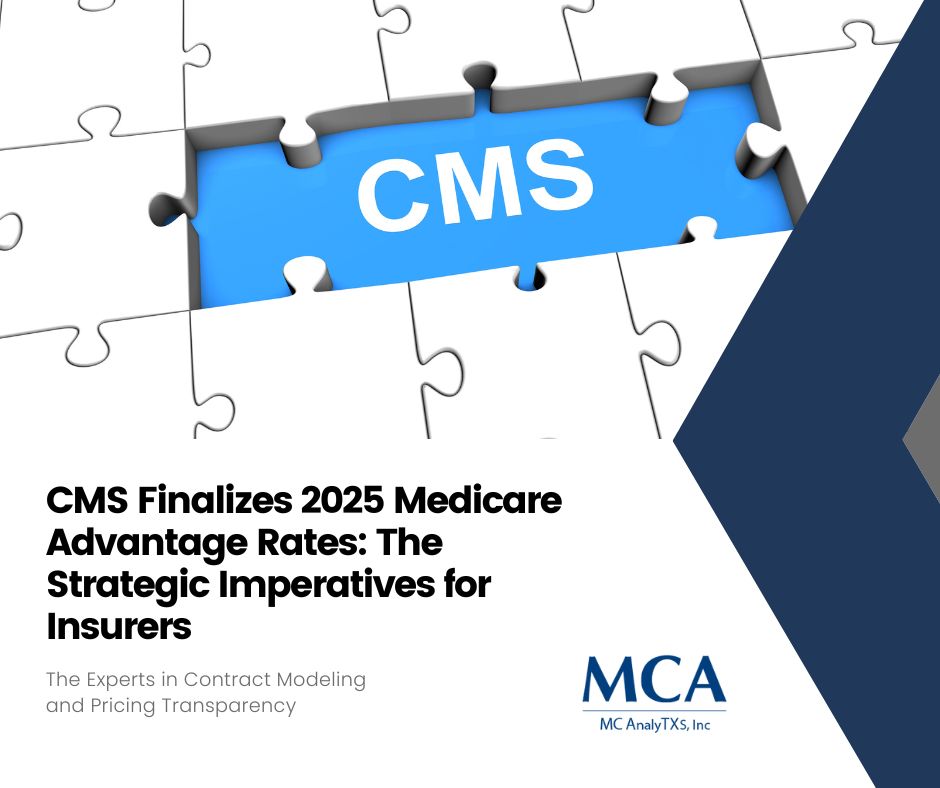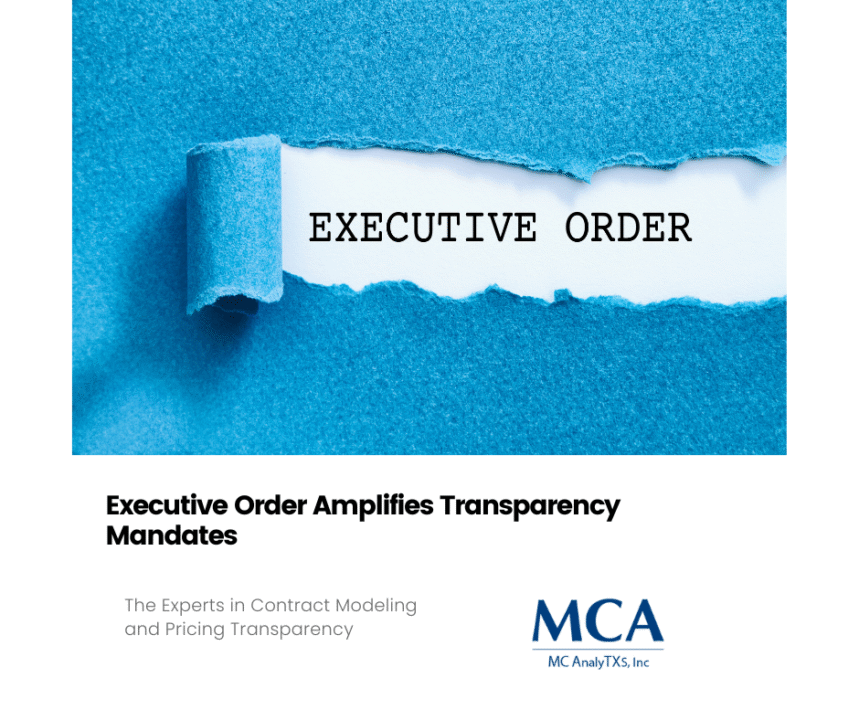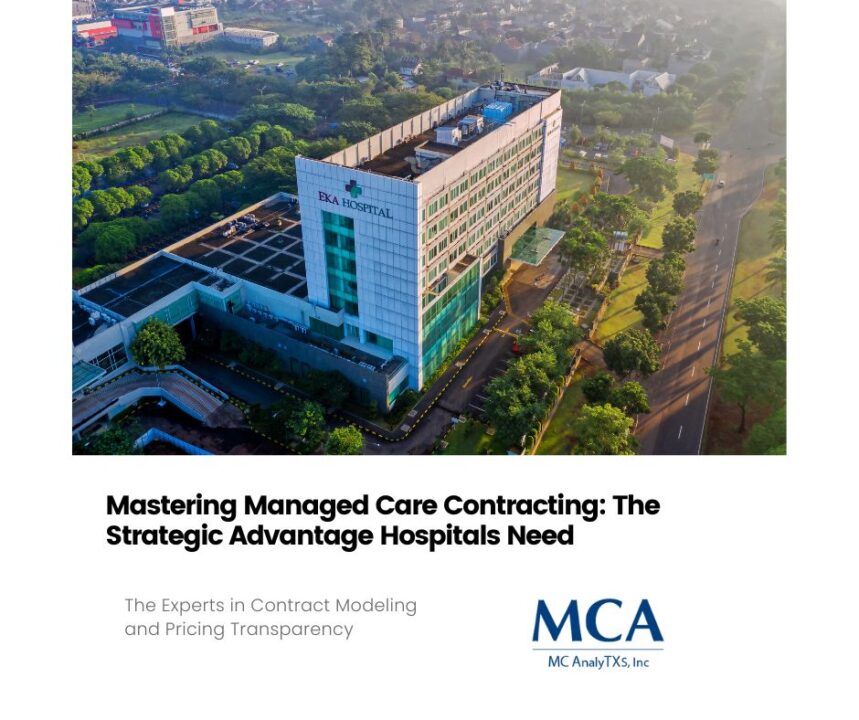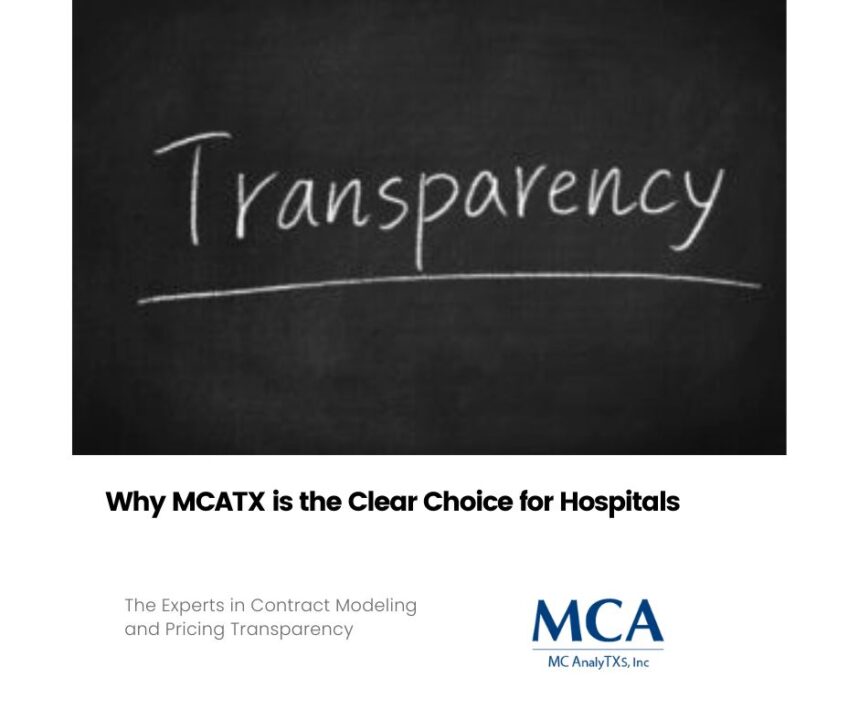
The Path to Profitability: Boosting EBITDA with Strategic Revenue Cycle Management
April 1, 2024
The call for pricing transparency is growing louder with higher fines requiring hospitals to disclose prices.
April 5, 2024The recent announcement of the 2025 Medicare Advantage (MA) rates by the Centers for Medicare & Medicaid Services (CMS) is a crucial roadmap that outlines a year ahead under a complex funding mechanism.
This article caters is for those looking to understand the deep-seated implications of these rates and to strategize proficiently come 2025.
Understanding the Moving Parts
The CMS’s finalization of the 2025 MA rates is an event that triggers a series of strategic maneuvers for health insurance providers. The rates encapsulate a blend of healthcare costs, quality improvements, and various regulatory measures intended to offer a more equitable and dynamic healthcare landscape for America’s seniors. At its core, these rates signify more than just financial benchmarks; they mark the start of a new cycle where MA plans must align patient care with fiscal responsibility.
Digging into the Regulations
The final rates reveal important stipulations that go beyond the financial implications. This year, CMS has placed a profound emphasis on transparency and provider-network adequacy. The rule also highlights a push for value-based care, where MA plan payments will be linked more directly to the quality of services provided rather than the quantity.
Navigating the New Landscape
The 2025 MA rates are not only about the top-line revenue figures; they require a holistic reevaluation of service delivery and financial forecasting.
Changes in Payment Mechanisms
CMS’s shift toward value-based care means that the MA rates are not just flat rates; they are multidimensional, incorporating factors such as Star Ratings and risk-adjusted patient outcomes. Health Insurance professionals need to understand the intricacies of these changes to ensure accurate and competitive bidding.
The Quality Quotient
Quality performance will influence a significant portion of an MA plan’s reimbursement, underscoring the importance of maintaining high-quality care measures. This pivot towards quality is a clear signal to insurers that merely providing services is not enough; they must be excellent and demonstrable.
Reengineering the Revenue Cycle
The intricate changes within the 2025 MA rates necessitate a reengineering of the revenue cycle management to align with the new benchmarks, foster compliance, and maximize profitability.
Forecasting and Predictive Analysis
Adapting to the new rates requires sophisticated forecasting models that incorporate payment variances due to quality adjustments. Predictive analytics will be key to understanding how different scenarios, like changes in patient demographics or the emergence of new treatments, can impact the bottom line.
Provider Engagement
The final rates emphasize the role of providers in MA plan success. Revenue cycle teams must work closely with providers to ensure that they understand the factors influencing their compensation and strategize on how to provide high-value care without sacrificing financial sustainability.
Strategic Planning for CFOs
For CFOs, the finalized 2025 MA rates represent a pivotal moment to lead their organizations through a landscape rife with change. Here are strategic considerations:
Risk Mitigation
Assess the prospective risk carefully. Understand the implications of rate changes and formulate mitigation strategies that could span from adjusting network contracting terms to aggressively pursuing supplementary revenue streams.
Capital Allocation
Given the new payment mechanisms, allocating resources efficiently is more critical than ever. Whether through technology investments or strategic partnerships, ensuring that the capital is oriented to capitalize and not just cope with the changes is paramount.
Regulatory Compliance
Stay vigilant. The complexity of modern healthcare regulation means that non-compliance can be a costly oversight. Commit to robust compliance and audit systems to avoid potential penalties.
Proactive Strategies to Leverage The Rates
To optimize performance under the new MA rates, insurance professionals should consider several proactive strategies.
Market Positioning
Evaluate the local market conditions and competitor strategies. Understanding where your organization stands in the bigger picture is critical to devising a market-centric approach to the new rates.
Technology Integration
Deploy technology solutions that can assist in real-time reporting and care assessment. Technologies enabling seamless, data-driven operations are more than conveniences; they are competitive differentiators.
Continuous Improvement
The healthcare landscape is perpetually evolving, and so too should your organization. Implement a culture of continuous improvement across all facets, from patient care to financial management, to stay ahead of the curve.
Conclusion
The finalized 2025 MA rates are more than just a component of the wider healthcare regulatory framework; they are strategic imperatives that require a diligent, collaborative, and innovative response from health insurance professionals. By understanding the nuanced implications and strategically addressing the changes, healthcare organizations stand to harness these rates as a platform for sustained growth, improved care quality, and operational excellence.
In a domain as complex and dynamic as healthcare, staying ahead of regulatory changes is not just good practice—it’s a competitive necessity. The health insurance sector is like an orchestra, where each player’s harmony contributes to the collective melody. With the 2025 MA rates, each professional within these organizations must ‘tune their instrument’ and prepare to perform a new symphony of care and fiscal stewardship.





